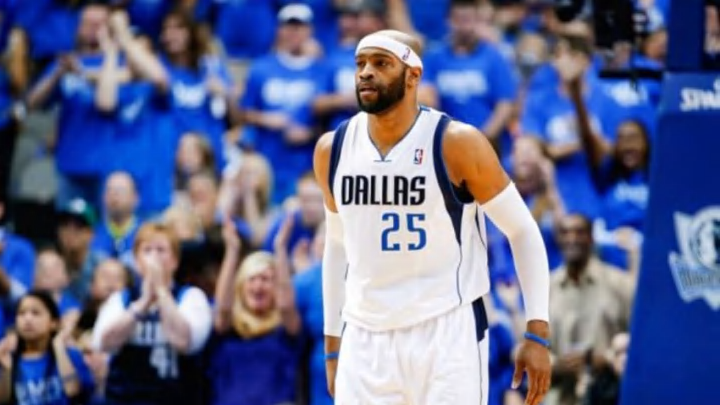
Tayshaun Prince has had a long and successful career in the league; winning a championship with the Detroit Pistons in 2004 and being selected into the NBA All-Defensive Second Team four times. Prince is the defensive stopper for the Grizzlies, a role that is especially important since the decline in minutes for Tony Allen.

Beale Street Bears
He averaged 6.0 points, 3.1 rebounds, 1.6 assists per game last season.
Strengths: Defense, Efficient Offensively
Prince has built a reputation as one of the top defensive wingmen in the league. He relies on a combination of determination, great defensive instincts and his 7’2″ wingspan. Prince may be pushed around in the post, but fights hard for position. Despite his age (34), he still has small bursts of deceptive athleticism and uses that to great effect when denying penetration. In isolation situations, he is hard to beat once he gets into his defensive stance.
His 7’2″ wingspan is what makes Prince such a great defender. He relies on it to deflect passes in the passing lanes, block shots, and create turnovers by poking the ball away from ball handlers. His standing reach makes it tough to shoot over him when he goes straight up, and helps when he fights for rebounds.
While Prince featured as an offensive threat in his earlier years as a Piston, he has been featured less offensively for the Grizzlies. However, he still affects the Grizzlies’ offense in several ways, especially through his high basketball IQ. He is an excellent complimentary offensive player, as he prefers to take efficient shots – his higher shot distribution areas are the 3-point corners (10.77 percent of his shot attempts) and at the rim (30.89 percent of shot attempts).
Weakness: Age, Shooting
Prince averaged 25.6 minutes last season, a career low since playing as a backup in his rookie year. While some of that could be attributed to the return of Mike Miller, the truth is that Prince fatigues quickly and the coaches have felt uneasy leaving him on the court for too long. The Grizzlies have championship aspirations and will therefore need their players to contribute at their highest levels whenever they are on the court.
Another one of Prince’s shortcomings is his shooting. Prince averaged 12.8 points on 45.9 percent shooting with Detroit, but since then, his scoring output has almost halved to 6.9 points on 41.5 percent shooting.
A quick glance at his shooting chart shows that he is a below average shooter in many sections of the court. This affects the Grizzlies’ floor spacing on offense and hurts them even more as they are already lacking in 3-point shooters. Many teams have already made the decision to leave Prince unguarded while on defense because they know he will most likely pass or miss.
Role and Expectations
It is never a good sign when you are involved in trade rumors, worse still when the trade is essentially a cost-saving one. That is the situation Prince is finding himself in. Prior to the draft, the Grizzlies were reportedly in trade talks with the Raptors over Prince – the Raptors would receive Prince and the 22nd pick for John Salmons and the 59th pick. The Grizzlies ultimately turned down the trade.
That, unfortunately, is the Grizzlies’ front office perception of Prince. At $7.7 million, Prince is overpaid for his production value. And while it is an expiring contract, the Grizzlies could have added shooters with that salary – a move that could swing the title in their favor. It will be interesting to see if the Grizzlies will attempt to move Prince again before the deadline, because there are teams in the league that will gladly “rent out” their cap space.
Barring a trade, I foresee Prince playing the same role that he did last season. He will probably remain a starter due to his defensive presence, but will see a reduction in minutes due to Vince Carter’s addition.
